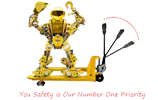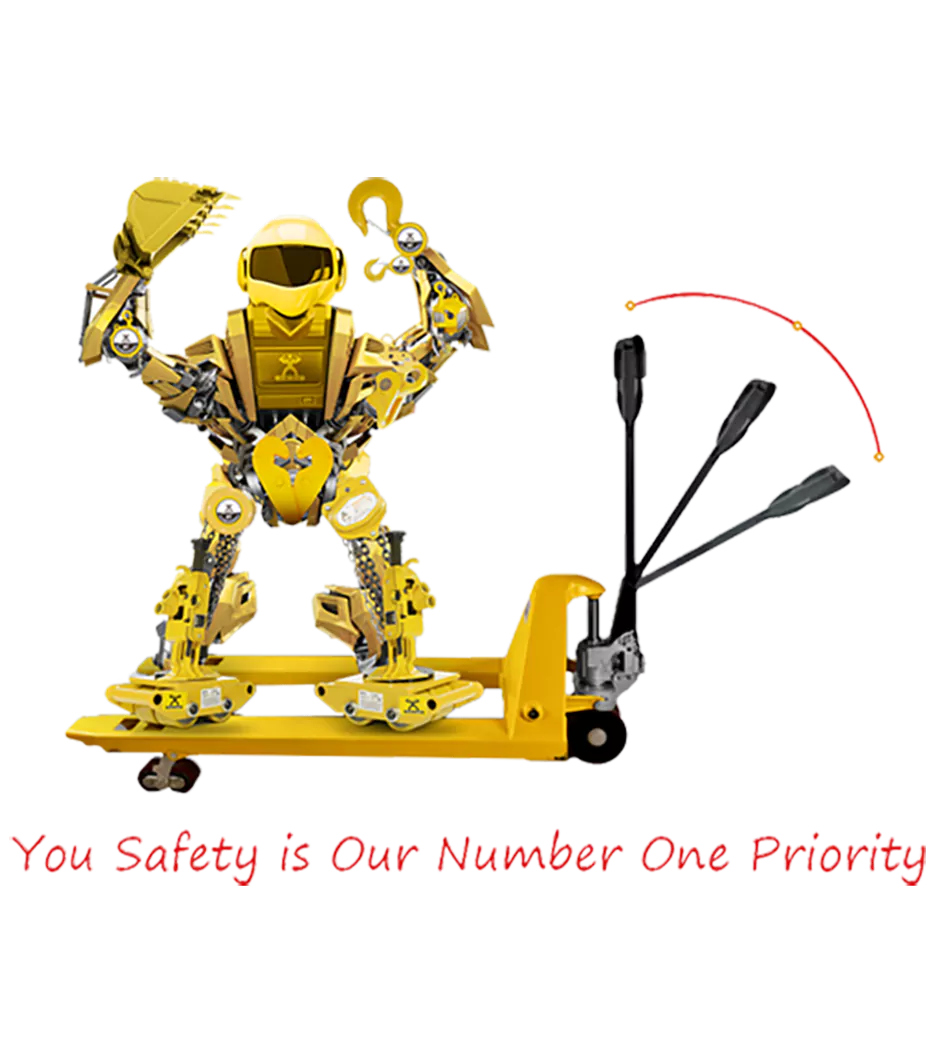Embarking on any mechanical task requires a solid understanding of the tools at hand and chain hoists are no exception. As stalwarts of lifting and moving heavy loads, chain hoists serve as indispensable assets across industries ranging from construction to manufacturing.
In this comprehensive guide titled “Mastering the Basics: A Guide to Chain Hoists,” we delve into the fundamental principles behind these essential devices. From exploring their inner workings to delving into safety considerations and applications, this guide aims to equip readers with the knowledge needed to harness the power of chain hoists effectively and safely.
Whether you’re a novice seeking to familiarize yourself with these tools or a seasoned professional looking to refresh your understanding, join us on this journey as we unravel the essentials of chain hoists.
1. Introduction to Chain Hoists
Chain hoists are mechanical devices designed for lifting and moving heavy loads in various industrial and commercial applications. These versatile tools consist of a chain or wire rope wound around a drum or sprocket, which is connected to a lifting hook or attachment point. By pulling on the chain or operating a hand crank, users can raise or lower the load with precision and control.
Chain hoists come in various configurations to suit different lifting requirements, including manual chain hoists, electric chain hoists, and pneumatic chain hoists. Manual chain hoists rely on hand-operated chain pulling for lifting, making them suitable for light to medium-duty lifting tasks.
Electric chain hoists, on the other hand, utilize an electric motor to power the lifting mechanism, offering greater lifting capacity and efficiency for heavier loads. Pneumatic chain hoists use compressed air to operate, providing a robust lifting solution for hazardous or explosive environments where electric hoists are unsuitable.
These hoists are equipped with safety features such as load-limiting devices, overload protection, and brake systems to ensure safe operation and prevent accidents. Additionally, chain hoists for sale are available in various sizes and configurations to accommodate different load capacities and lifting heights, making them indispensable tools in industries such as construction, manufacturing, warehousing, and maintenance.
2. How do Chain Hoists Work?
Chain hoists operate on a simple yet effective mechanical principle to lift and lower heavy loads with precision and control. Here’s how they work:
- Lifting Mechanism: The core of a chain hoist is its lifting mechanism, which consists of a chain or wire rope wound around a drum or sprocket. The chain is connected to a lifting hook or attachment point that securely holds the load to be lifted.
- Manual Operation: In manual chain hoists, lifting is achieved by pulling on a hand-operated chain, which is connected to the lifting mechanism. By pulling the chain in one direction, the load is raised, while pulling it in the opposite direction lowers the load. This manual operation provides users with precise control over the lifting process.
- Electric or Pneumatic Power: In electric and pneumatic chain hoists, the lifting mechanism is powered by an electric motor or compressed air, respectively. The motor or air power drives the rotation of the drum or sprocket, causing the chain to move and lift the load. Electric chain hoists are commonly used for heavier loads or in applications where manual lifting is impractical or unsafe.
- Brake System: To ensure safe and controlled lifting and lowering, chain hoists are equipped with brake systems that prevent the load from slipping or dropping unexpectedly. These brake systems engage automatically when the hoist is not in operation, providing added security and stability.
- Load-Limiting Devices: Many chain hoists from a professional company are equipped with load-limiting devices or overload protection systems that prevent the hoist from lifting loads beyond its rated capacity. These devices help prevent accidents and damage to the hoist by alerting users when the load exceeds safe limits.
3. Types of Chain Hoists
Chain hoists come in various types to accommodate different lifting requirements and operational preferences. Here are the most common types:
1. Manual Chain Hoists:
Manual chain hoists, also known as hand chain hoists, are operated by pulling on a hand chain to lift the load. The chain is connected to the lifting mechanism, which winds around a drum or sprocket to raise the load.
These hoists are suitable for light to medium-duty lifting applications and are popular for their simplicity, reliability, and portability. They are often used in construction, workshops, and maintenance tasks where power sources may be limited or unavailable.
2. Electric Chain Hoists:
Electric chain hoists are powered by an electric motor, which drives the lifting mechanism to raise and lower the load. These hoists offer greater lifting capacity and efficiency compared to manual chain hoists, making them suitable for heavier loads and frequent use.
Electric chain hoists are available in various configurations, including single-speed and dual-speed models, as well as options for variable speed control. They are commonly used in manufacturing facilities, warehouses, and production lines for lifting and moving heavy materials.
3. Pneumatic Chain Hoists:
Pneumatic chain hoists, also known as air chain hoists, operate using compressed air as a power source. The compressed air drives the lifting mechanism, providing a robust and reliable lifting solution for hazardous or explosive environments where electric hoists are unsuitable.
Pneumatic chain hoists are ideal for heavy-duty lifting applications in industries such as mining, oil and gas, and marine operations. They offer high lifting capacities and can withstand harsh operating conditions.
4. Specialty Chain Hoists:
Specialty chain hoists are designed for specific lifting requirements or unique applications. These may include hoists with extended lift heights, corrosion-resistant coatings for outdoor use, explosion-proof certifications for hazardous environments, or custom configurations tailored to specific industry needs.
Specialty chain hoists provide users with tailored solutions to meet their unique lifting challenges and operational requirements.
By offering a range of types and configurations, chain hoists can be adapted to suit a wide range of lifting tasks and environments, providing users with versatile and reliable lifting solutions.
4. Components of a Chain Hoist
Chain hoists consist of several key components that work together to lift and lower heavy loads safely and efficiently. Here are the main components:
- Load Chain: The load chain is a series of interconnected links made of durable steel or alloy material. It is responsible for bearing the weight of the load and transmitting lifting force from the hoist mechanism to the load.
- Lifting Mechanism: The lifting mechanism includes the drum or sprocket around which the load chain is wound. In manual chain hoists, the lifting mechanism is operated by pulling on a hand chain, while in electric and pneumatic hoists, it is powered by an electric motor or compressed air.
- Hook or Attachment Point: The hook or attachment point is where the load is securely attached to the chain hoist. It typically consists of a forged steel hook with a latch or safety catch to prevent accidental release of the load.
- Brake System: Chain hoists are equipped with brake systems that engage automatically to prevent the load from slipping or dropping when the hoist is not in operation. This ensures safe and controlled lifting and lowering of the load.
- Gearbox: The gearbox is a set of gears and bearings that transmit power from the motor or manual chain to the lifting mechanism. It provides the necessary torque and mechanical advantage to lift heavy loads with ease.
- Housing or Enclosure: The housing or enclosure of the chain hoist protects the internal components from damage and provides housing for the motor, gearbox, and other mechanical parts. It is typically made of durable materials such as cast iron or aluminum.
- Control Pendant (Electric Hoists): Electric chain hoists are often equipped with a control pendant or pendant station that allows the operator to control the hoist remotely. The pendant typically includes buttons or switches for raising, lowering, and stopping the hoist, as well as emergency stop and overload protection features.
By understanding the components of a chain hoist, users can ensure proper operation and maintenance to maximize safety and efficiency in lifting operations.
5. Capacity and Load Rating
The capacity and load rating of a chain hoist refers to the maximum weight it is designed to lift safely. These specifications are crucial factors to consider when selecting a chain hoist for a particular lifting task. Here’s what you need to know:
Capacity:
The capacity of a chain hoist is typically expressed in terms of weight, such as tons or kilograms. It represents the maximum load that the hoist can lift without exceeding its rated capacity. It’s essential to choose a hoist with a capacity that matches or exceeds the weight of the load being lifted to ensure safe and efficient operation.
Load Rating:
The load rating of a chain hoist refers to the maximum weight that the hoist can lift under specific conditions, such as the lifting height, lifting speed, and frequency of use. Load ratings are determined by factors such as the strength of the load chain, the power of the lifting mechanism, and the design of the hoist.
When selecting a chain hoist, it’s essential to consider both the capacity and load rating to ensure that the hoist can safely handle the intended lifting tasks. Overloading a chain hoist can lead to equipment damage, accidents, and injuries, so it’s crucial to follow manufacturer guidelines and adhere to safe lifting practices at all times.
Conclusion:
In conclusion, when it comes to purchasing a chain hoist, it’s essential to choose a reliable and experienced supplier that can meet your needs with quality products and excellent service. Gongyougroup is a professional company with over 20 years of experience in production, exporting, and after-sale service. With three factories located in Hebei province, north of China, Gongyougroup offers a wide range of lifting equipment, including chain hoists, lever hoists, hand pallet trucks, hand pallet stackers, webbing slings, and ratchet straps.
With high production capacities and a commitment to quality, Gongyougroup ensures that customers receive top-notch products that meet their lifting requirements. Contact Gongyougroup today for all your chain hoist needs, and experience the reliability and professionalism that come with over two decades of industry expertise.






